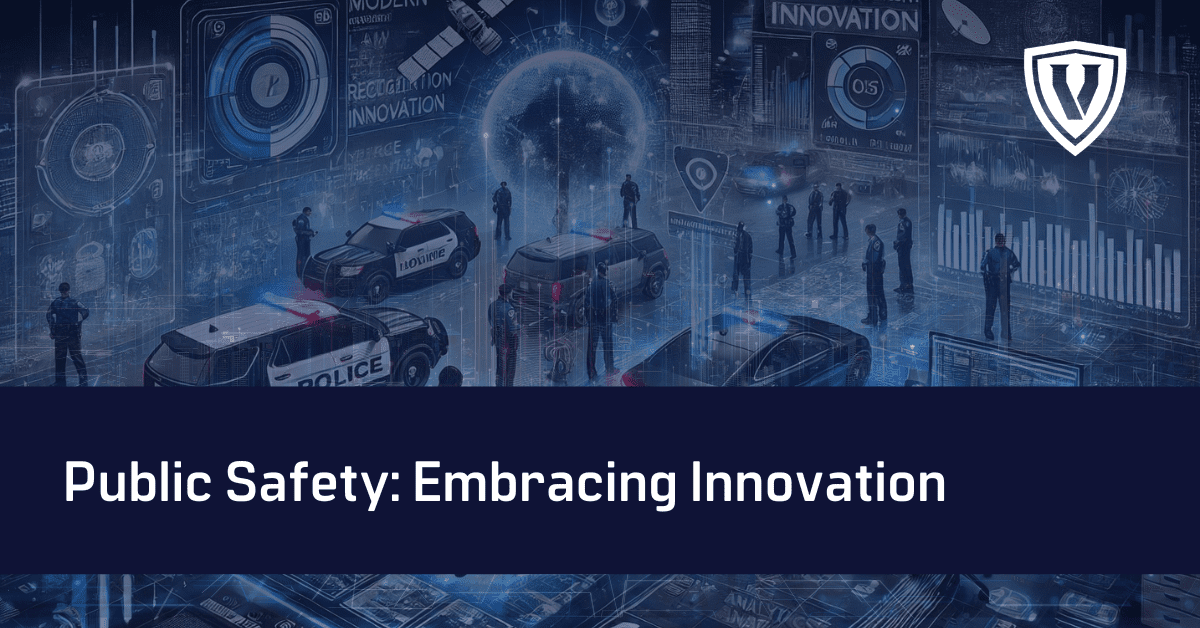The world has changed—has your agency kept up?
Criminals are using advanced technology, encrypted communications, and digital networks to stay ahead of law enforcement. If agencies don’t innovate, they risk falling behind, making it harder to prevent crime, protect communities, and respond effectively.
The Need for Innovation in Public Safety
Law enforcement agencies face evolving threats that require modern solutions. Outdated, disconnected systems slow investigations, create inefficiencies, and hinder officers from making informed decisions in real-time. Criminals are leveraging cutting-edge technology—law enforcement must do the same to stay ahead.
Agencies that embrace innovation can:
- Improve response times and resource allocation.
- Utilize real-time intelligence for proactive crime prevention.
- Enhance interagency collaboration to close cases faster.
- Increase officer safety with situational awareness tools.
Game-Changing Technologies for Law Enforcement
1. License Plate Recognition (LPR) for Rapid Vehicle Tracking
LPR technology is revolutionizing stolen vehicle recovery, suspect identification, and traffic enforcement. By scanning license plates in real time, agencies can:
- Track suspect movements across jurisdictions.
- Instantly flag stolen vehicles.
- Identify vehicles associated with criminal activity.
When integrated with shared databases, LPR enables officers to act quickly and decisively, reducing the time criminals have to evade capture.
2. Signals Intelligence (SIGINT) to Uncover Hidden Threats
SIGINT tools provide critical insights by monitoring and analyzing communication signals, helping law enforcement:
- Identify organized crime networks.
- Monitor suspicious activities tied to digital communications.
- Uncover illicit operations, such as trafficking rings and cybercrime networks.
By leveraging SIGINT, agencies gain deeper intelligence, allowing for proactive intervention before criminal plans unfold.
3. Open-Source Intelligence (OSINT) for Real-Time Intelligence Gathering
Social media, news sources, and public databases offer vast amounts of intelligence that law enforcement can use to prevent and investigate crimes. OSINT tools allow agencies to:
- Monitor social media for emerging threats.
- Track persons of interest based on online activity.
- Analyze real-time information for rapid response.
With the right tools, OSINT transforms publicly available data into actionable insights that enhance crime prevention strategies.
4. Advanced Analytics to Optimize Crime Response and Prevention
Data-driven policing is the future. By harnessing analytics, agencies can:
- Identify crime hotspots for smarter resource allocation.
- Detect trends that indicate emerging threats.
- Improve decision-making through real-time dashboards and reporting.
AI-powered analytics provide law enforcement with deeper visibility into crime patterns, allowing agencies to take strategic action before incidents escalate.
Overcoming Resistance to Change
Despite the clear advantages, many agencies are still hesitant to adopt new technologies. Common concerns include budget constraints, data security risks, and training requirements. However, agencies that fail to modernize risk falling behind criminals who are constantly adapting their tactics.
How Agencies Can Overcome Barriers:
- Invest in Training: Ensuring officers are well-versed in new technology maximizes its effectiveness.
- Seek Funding Opportunities: Grants and federal funding programs support law enforcement modernization efforts.
- Prioritize Data Security: Implementing CJIS-compliant systems protects sensitive information while enabling efficient data sharing.
The Future of Public Safety: Innovation and Collaboration
Leaders who prioritize innovation and interagency collaboration will build safer communities. The future of law enforcement depends on:
- Modern, interoperable technology that connects departments and enhances situational awareness.
- Data-driven strategies that enable proactive crime prevention.
- Collaboration between agencies to eliminate silos and improve response times.
Departments that embrace digital transformation will not only improve crime-fighting capabilities but also enhance public trust by demonstrating efficiency and effectiveness.
Who’s Ready to Lead the Way?
The choice is clear—agencies that innovate will shape the future of public safety. It’s time to embrace technology, optimize resources, and work smarter to build safer communities.

